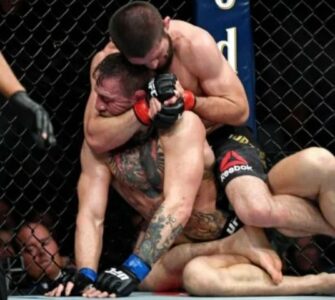In life you can often encounter the term “those who can’t do, teach” however this is one of the worst offenders in terms of simply not being true in most cases – and especially so in all things bjj.
The ability to transfer knowledge is something that deserves a greater appreciation because it demands you give yourself to it constantly. There is no I in teaching in no uncertain terms. This is also an attribute that makes the whole teaching experience much harder because it requires you surrender yourself fully to it and give your best to approach the subject matter in the best possible way.
Working with people as opposed to surrounded by them takes an extraordinary amount of mental effort. This is why teaching should never be just another thing on your daily chores schedule.
While many academies have established curriculum others have certain cycles they repeat but there’s also a lot of additional information mixed in. The freshness of the sport doesn’t even always allow for beginner classes so often a starter will catch themselves drifting and dosing off when strange terminology is introduced.
What are some basic insights that can help you improve your teaching?
One necessary factor of teaching is to always be prepared. Now when we talk preparation and bjj one could misconstrue the term as relating to physical fitness and the agility with which the move is executed.
“Less is more” is often the most useful aspect of preparation. Too many details can detract from the effectiveness – but not enough details can miss the point entirely. Consider boiling down what your teaching to a single concept and then tie no more than 5 details to it (considering how much room for repetition you’re leaving).
Transference
Transference is the ability to extend a concept learned in one context to the other. It is at the very core of learning because often times learning is just that – the ability to apply acquired knowledge in a rapidly changing situation. In jiu jitsu situations this can mean recognizing and acknowledging the concept in one technique to the other. Bunching related techniques is only as good as the concept behind them. If the concept is different, odds are less of the details will be retained after the same amount of repetition
One thing that would promote transference is testing. Encourage students to try different variations – one way to make sure you do the technique right is to try doing it the wrong way and see that it’s just not working without it.
Transference is also one thing that separates the elite competitors. The real mark of transfer is intentional the goal should be to teach students to accept responsibility for their learning rather then expecting others to teach them. Boiling down something for a student will never be as effective as them reaching the conclusion on their own.
Teaching is just what a recent posting of bjj coaching guru John Danaher reflected on:
Two sides of my students: Most of you know my students through their efforts in competition (shiai). There is however, a whole other side to them that you may not be aware of – their ability to teach to others what they do in competition.
I have always believed that the ability to teach the sport well often has a beneficial effect upon your own performance. This is not always the case, I have known some outstanding competitors who were not gifted teachers and vice versa, but as a general rule there is a lot of truth in it.
I find that clarity and succinctness of expression in the technical and tactical elements of the game helps not only our ability to get others to understand what we do, BUT OURSELVES AS WELL. As such, our own internal dialogue when we try to overcome and solve problems is quicker and more efficient.
In addition to performance enhancement, getting my students into teaching the sport lets them see beyond mere competition and into the deeper social aspects of jiu jitsu, particularly the theme of mutual benefit that Jigoro Kano made the foundation of his approach to grappling. I often involve my senior students in the teaching process. Many times I ask them to teach a move back to me that I had shown them previously.
Other times I make them demonstrate a move to the class while I assist. When my body has physical issues and I cannot physically demonstrate a move, I will have them demonstrate whilst I narrate the salient features. As a result, all of my senior students (Senpai) are excellent teachers. Some of my favorite times to watch them teach is immediately after a big competition where they have employed some aspect of our game, and then watch them teach it to a group at a seminar shortly afterwards. Invariably the audience is shocked at the level of detail involved and their ability to explain those details in ways that increase performance. Here Gordon Ryan shows details of our back attack system at Shawn Williams academy in LA, just a week after EBI 11 where he used it so successfully to take gold.

















